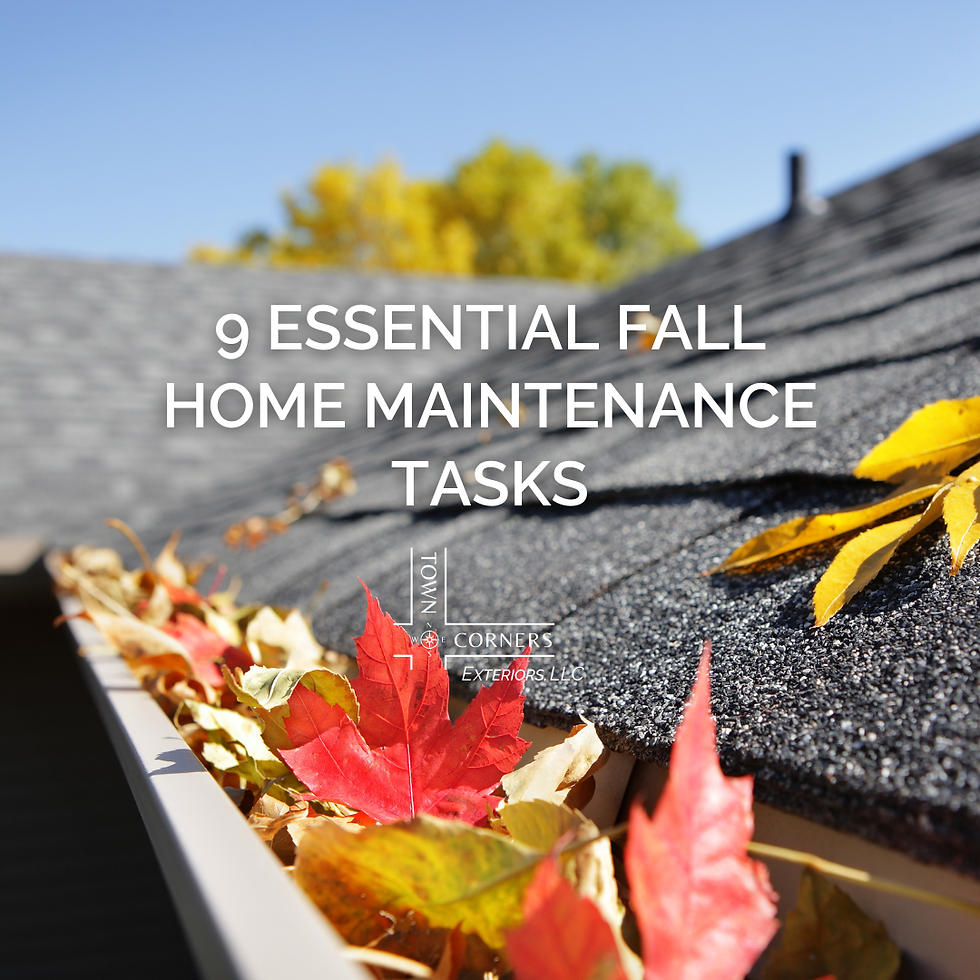Discover How West Michigan Weather Wears Down A Roof
- Rebecca Garza
- 14 minutes ago
- 4 min read

It's unavoidable, due to weather conditions and constantly fluctuating temperatures, roofs in West Michigan require more frequent inspections and maintenance. In this article, we'll delve into what a roof needs to withstand lakeshore weather and how roof damage typically occurs.
Your Roof Is Vulnerable Year-Round.
The four seasons and lake effect weather can take a toll on your roof, especially if it's older than 20 years and hasn't received regular maintenance.
Winter
From ice dams to all kinds of damage from the freeze-thaw cycle, Winter is harsh on your roof in West Michigan.
Ice dams. When melted snow refreezes, ice dams form. Ice dams trap water behind them, allowing it to seep under the shingles and cause leaks, rot, mold, and damage to insulation. So, keep your attic cold to prevent snow from melting and refreezing on the edge of your roof.
The freeze-thaw cycle. The freeze-thaw cycle occurs when day temperatures rise above freezing and night temperatures drop below freezing. This process can cause roofing materials to expand and contract, which could weaken seals, create cracks, and gaps between shingles. Here's what to do about it:
Clear your gutters so melting snow has somewhere to go.
Inspect and repair your attic insulation and ventilation to prevent warm air from melting snow unevenly.
Rake snow off the roof after heavy storms.
Schedule a post-winter inspection to catch issues early on.
Spring
Spring on the West Michigan Lakeshore is known for its windy storms. The wind can dislodge roofing components, displace flashing, tear away shingles, or cause entire sections of the roof to collapse! Furthermore, clogged gutters and saturated soil may cause water to back up under your shingles.
Fortunately, there are things you can do.
Schedule regular inspections.
Walk around and inspect for windstorm damage, including lifting, missing, or loose shingles, as well as the integrity of the underlayment. Look for wear on the seals around the chimney, skylights, and vents.
Strengthen the flashing.
Clean your gutters and downspouts to safely direct water away from the foundation.
Keep trees at least ten feet away from the roof line. If necessary, trim your trees and branches to prevent them from falling on your roof.
Summer
Here, Summer entails harsh UV rays, humidity, and sometimes even hail showers.
UV exposure. Prolonged sun exposure can degrade shingles. The UV rays break down the binders in asphalt shingles, causing granule loss, but you need the granules for UV protection. If your roof easily overheats, consider installing light-colored or reflective shingles to help keep it cool.
Humidity. Humidity promotes the growth of mold, mildew, and algae, especially in shady areas. So, apply protective treatments or install algae-resistant shingles. Then, ensure the ridge and soffit vents are clear to allow for proper airflow.
Hailstones. Ranging from the size of a pea to the size of a golf ball, hailstones can loosen granules, dent, crack, and puncture roofing materials. Granule loss makes shingles vulnerable to deterioration and leaks. Install impact-resistant roofing materials to extend the lifespan of your roof.
Fall
Your roof has to deal with falling leaves, wind, and rain in Autumn.
Clogged gutters. Falling leaves and debris can clog your gutters and downspouts. This can cause water to back up, damaging roofing components. So, clear your gutters and roof valleys regularly, removing debris, sticks, leaves, and moss.
Wind and rain. Combining heavy wind and rain can lead to leaks and rot, especially if your roof is not properly maintained. So, schedule a Fall inspection and repair missing or damaged shingles before the first snowfall.
Lake Effect Weather
When you live close to the lake, you experience a lot of snow squalls and abrupt weather changes. Several inches of snow and rain can appear without warning. Repeated cycles of sudden wet and dry conditions can accelerate aging in shingles and underlayment. The quick succession of wet and dry weather significantly speeds up how fast shingles and the underlayment age.
Fortunately, there are a few things you can do to protect your roof:
Install ice and water shields in vulnerable areas, such as the eaves and valleys.
Select a roofing contractor that understands the harsh effects of lakeshore weather.
Choose durable, high-quality roofing materials that are meant for intense climates.
Temperature Swings, Moisture, and Water Damage
It doesn't matter what time of year it is; temperature fluctuations, moisture, and water damage will always be a risk.
Temperature swings. Temperature swings may cause roofing materials to expand and contract, which can loosen fasteners and weaken the structural integrity.
Trapped moisture. Trapped moisture in the attic can condense, leading to mold and mildew growth. When this happens, you may see black spots on the attic wood. These are the solutions:
Install a new ventilation system to reduce moisture buildup.
Use breathable underlayment so moisture can escape.
Have a professional inspect for signs of warping and movement.
Water damage. Water can accumulate on any roof, but flat roofs are particularly vulnerable. Over time, standing water may lead to wood rot, mold growth, and structural damage. Even a tiny leak can cause significant water damage in the attic, insulation, and interior, so ensure that your downspouts direct water away from the foundation.
Water damage can take some time to become noticeable, but ceiling discoloration and water stains are signs.
Are you due for a roof inspection, replacement, or repairs? Call Town Corners Exteriors at 616-772-9700 or fill out our contact form for a quote. It's time to prepare your roof for Winter!




Comments